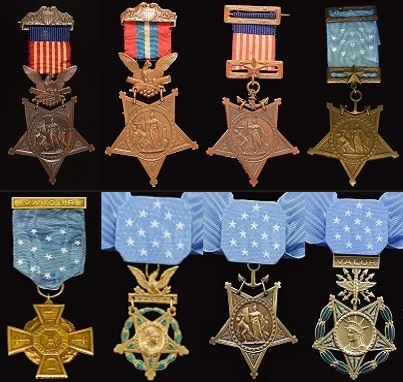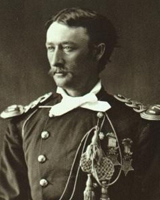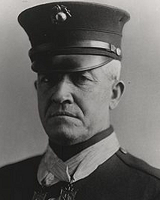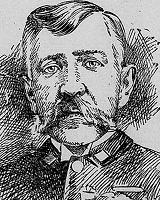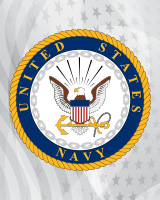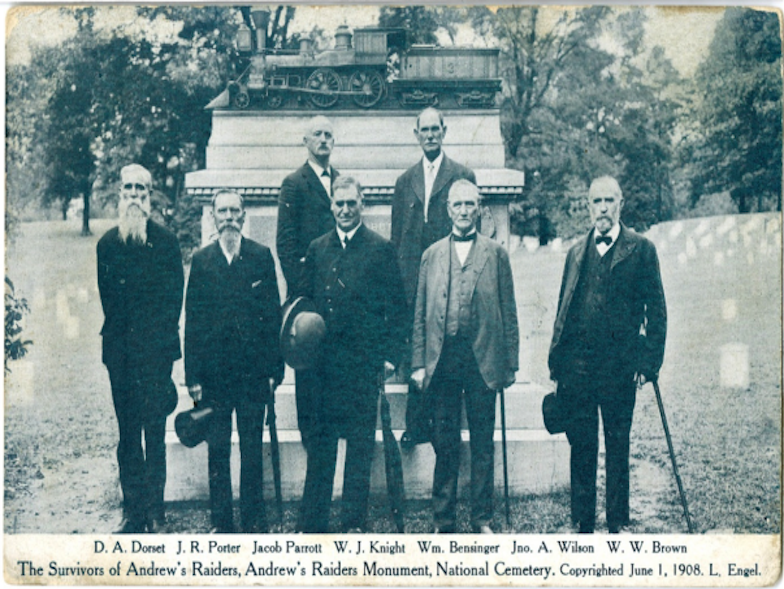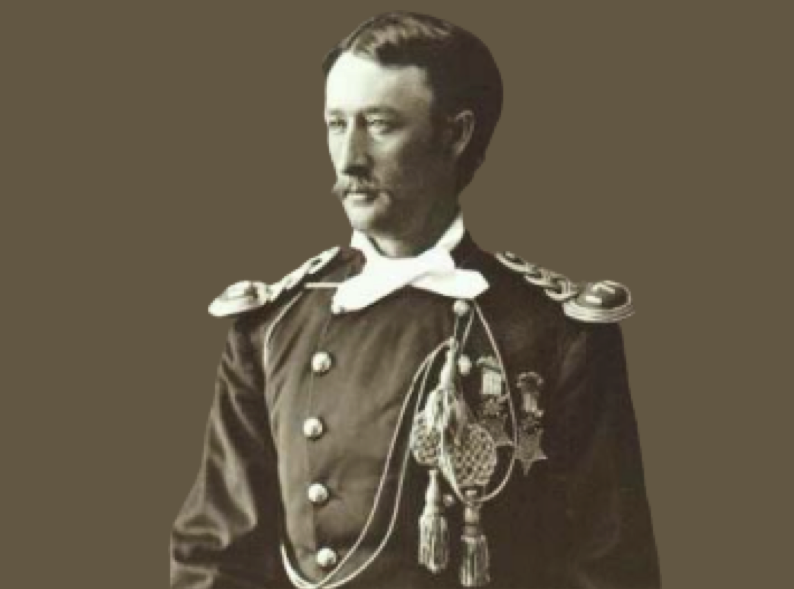Medal of Honor history
The Medal of Honor is the highest award for valor in action against an enemy force that can be bestowed upon an individual serving in the Armed Services of the United States. Recipients receive the Medal of Honor from the President on behalf of Congress. It was first awarded during the Civil War and the eligibility criteria, medal design, and recognition on a recipients' grave marker have all evolved over time.
Military awards and medals had little role in the early years of the U.S. military. During the Revolutionary War, three soldiers received a purple heart-shaped Badge of Military Merit made of cloth for gallantry, fidelity, or essential service. The Badge of Military Merit fell out of use, becoming the Purple Heart in 1932.
During the Mexican-American War, the government began to systematically recognize enlisted men and non-commissioned officers who distinguished themselves in action for the first time. Men received a certificate and cash bonus, but physical badges were not issued until 1905.
The political and military leaders viewed the Civil War as significantly distinct — with two American largely-volunteer militaries facing one another — and requiring a greater recognition of courage.
Medal of Honor Recipients

Remembrance: Medal of Honor recipients interred at VA national cemeteries
The greatest commendation our nation can confer is the Medal of Honor. The Medal of Honor is reserved for those who have distinguished themselves "conspicuously by gallantry and intrepidity at the risk of life above and beyond the call of duty."
There are 433 Medal of Honor recipients interred at VA national cemeteries including 6 double recipients. Visit their memorial pages to celebrate their legacy, military service and sacrifice to our nation. You can also post tributes, upload images, and share biographical information and historical documents.
Medal of Honor: Double recipients interred at VA national cemeteries
In July of 1918, it was decided that the Medal of Honor could only be awarded to an individual once. Before this, however, 19 servicemembers received this decoration twice. There are 6 double recipients of the Medal of Honor interred at VA national cemeteries.
Thomas Custer
U.S. Army, CAPT
Civil War
John Cooper
U.S. Navy, QM
Civil War
Daniel Daly
USMC, SGT MAJ
Boxer Rebellion / Haiti
John Laverty
U.S. Navy, FN
Civil War
William Wilson
U.S. Army, SGT
Indian Wars
Louis Williams
U.S. Navy, C of H
Non-Combat
| Conflict or Action | Medal of Honor Recipients | Medal of Honor Double Recipients |
|---|---|---|
| Civil War | 89 | 3 |
| Indian Wars | 75 | 1 |
| 1871 Korean Campaigns | 4 | 0 |
| Spanish-American War | 16 | 0 |
| Philippine Insurrection | 12 | 0 |
| Boxer Rebellion | 14 | 1 |
| Philippines 1911 | 2 | 0 |
| Mexican Campaign | 7 | 0 |
| Haiti 1915, 1919–1920 | 2 | 0 |
| World War I | 11 | 0 |
| World War II | 90 | 0 |
| Korea | 32 | 0 |
| Vietnam | 46 | 0 |
| Global War on Terror | 3 | 0 |
| Non-combat | 30 | 1 |
| Total | 433 | 6 |
| Special Population | Medal of Honor Recipients |
|---|---|
| African-American | 18 |
| American Indian / Native Hawaiian | 5 |
| Asian-American | 12 |
| Double Recipients | 6 |
| Hispanic | 21 |
| Hispanic / Asian-American | 1 |
More Resources
View the statistics for Medal of Honor recipients from each conflict and branch of the military*
Search for Medal of Honor recipients and view citations and more details*
Learn more about the Medal of Honor*
Civil War
During the waning days of December 1861, President Abraham Lincoln signed a Congressionally-approved bill (Public Resolution 82) creating 200 "medals of honor," specifically for enlisted Navy personnel. In July 1862, President Lincoln authorized 2,000 Army medals. Like the Navy medals, these were to be "presented, in the name of the Congress" to enlisted personnel who "distinguish themselves by their gallantry in action, and other soldier-like qualities" during the Civil War. By this time, eighty-eight soldiers had already performed actions for which they eventually received the Medal of Honor. During the Civil War, there was no time limit between the action and award so many recipients gained Medals of Honor in the years after the war ended.
The first recipients of the Medal of Honor were the men known collectively as Andrews' Raiders, who led a daring military mission behind Confederate lines to steal a train, escape north in order to destroy rail lines supplying the Confederate Army. The 22 soldiers and 1 civilian who participated in the "Great Locomotive Chase" were led by civilian James J. Andrews. On March 25, 1863, 6 Raiders received the Medal of Honor and another 15 received the medal later; Andrews, a civilian, did not qualify for it.
On March 3, 1863, both services made the decoration permanent. In addition, the Army extended eligibility for the Medal of Honor to officers as well as enlisted personnel. The Navy medal remained available only for enlisted personnel until 1915. Due to the Army's change of policy, Captain Thomas Custer was awarded two Medals of Honor for distinguished action on Virginia battlegrounds. Custer captured the enemy's flag at Namozine Church on May 10, 1863, and two more flags at Saylor's Creek in 1865.
The Civil War was an era of new and changing military technology and slowly evolving military tactics, as a result some of the Medal of Honor citations vary from modern presentations. For instance, medals were awarded for flag capture. In the Civil War, regimental flags still played a major role in guidance and troop movement during the heated din of battle. Loss of a flag meant troop confusion, disarray, and could lead to disaster. As such, the regimental colors had great military significance. Additionally, colors often were paid for by the communities from which the regiment came. Therefore, the flags were a symbol of pride and sentimentality for the soldiers. Flag capture often brought low morale and shame to the military unit.
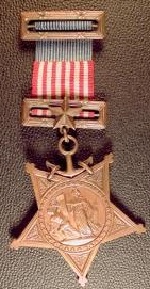
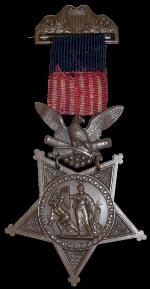
Another variation from current citations is the appearance of some Civil War military engagement inspiring more gallantry than others. On May 22, 1863, ninety-six men performed actions for which they received the Medal of Honor at Vicksburg, Mississippi. In all, at Vicksburg 120 Medals of Honor were awarded. The most medals awarded in a single day, however, are attributed to June 30, 1863. Three-hundred members of the 27th Maine agreed to remain on duty to guard Washington, DC for four additional days after their enlistment ended. Nevertheless, the entire regiment of 864 men was awarded the honor as a result of a typographical error. The government later recalled all medals given to the 27th Maine following a 1916 review of the case.
Another example of action that resulted in multiple troops receiving the Medal of Honor after a single battle occurred on September 29, 1864. General Ulysses S. Grant's soldiers attacked the Confederate defenses around Richmond, in the Battle of Chaffin's Farm, Virginia. In spite of swampy land, felled trees, and fortifications, the men — mainly the 4th and 6th U.S. Colored Troops (USCT) — charged ahead into withering fire. They held their position until reinforcements arrived. Thirty men proved their valor that day and were awarded the Medal of Honor; thirteen of them were black USCT soldiers.
In all, the government presented 1,523 Medals of Honor to recipients who served during Civil War, more than any other period in history. The number does not include medals awarded to the 27th Maine, then rescinded. Of the 1,523 Medals of Honor, 1,198 were to soldiers and 324 were to sailors or marines. Twenty-five Medals of Honor were awarded to African-American soldiers, the first being Sergeant William H. Carney of the 54th Massachusetts Colored Infantry. One went to Dr. Mary Walker, who remains the only female recipient, and who was also a civilian. The most recent medal was delivered in 2014 to Lieutenant Alonzo H. Cushing, killed at Gettysburg.
Learn more about Medal of Honor recipients during the Civil War
Andrews' Raiders
On April 12, 1862, twenty-four men participated in the Great Locomotive Chase, a daring military mission breaching Confederate Lines. Twenty-two of the men were military and known in history as "Andrews' Raiders." Approximately one year later, six of these Raiders were the very first to receive the Medal of Honor.
Battle of Chaffin's Farm
On September 29, 1864, General Ulysses S. Grant's soldiers attacked the Confederate defenses around Richmond, VA, in the Battle of Chaffin's Farm. The men — mainly the 4th and 6th U.S. Colored Troops — charged ahead into fire. That day, 30 men proved their valor and were awarded the Medal of Honor.
Captain Thomas Custer
During an engagement at Namozine Church on April 3, 1865, Custer captured a Confederate flag, for which he received the Medal of Honor. Three days later, Custer again demonstrated his valor at the Battle of Sailor's Creek, capturing two color standards. For this, Custer received a second Medal of Honor.
Indian Wars
The Medal of Honor was awarded to participants of the Indian War campaigns fought on America's western frontier from 1865 to 1891. In some locations this military activity coincided with the Civil War conflict.
Due to the high number of nominations for the Medal of Honor, the Battle of Little Big Horn in Montana marked a "new standard" of eligibility for the Medal of Honor. Beginning with this engagement on June 25, 1876: "The [individual's] conduct which deserves such recognition should not be the simple discharge of duty, but such acts beyond this that if omitted or refused to be done, should not justly subject the person to censure as a shortcoming or failure." Many were nominated for the medal for actions at Little Big Horn, but only twenty-four were awarded it.
19th Century
As the Medal of Honor grew in familiarity and admiration, aging Civil War veterans wrote to officials at the Record and Pension Office within the Adjutant General's Office requesting the medal. As a result, between 1891 and 1897, more than 500 Medals of Honor were awarded for actions during the Civil War. Furthermore, organizational badges and veteran service medals that resembled the Medal of Honor were developed, most significantly by the Grand Army of the Republic (GAR). The GAR was a fraternal and political organization of veterans from the Civil War.
In 1896, President William McKinley reacted by directing the U.S. Army to write new policy for Medal of Honor applications and awards; at the same time, Congress passed a bill changing the medal's ribbon from blue field and vertical red stripes to five vertical stripes of red, blue, white, blue, red. The new criteria required "gallantry and intrepidity" above and beyond expected duty. For the first time, nominations based on any action that occurred after January 1, 1890, had to be submitted by someone other than the would-be recipient; testimony by a witness was required.
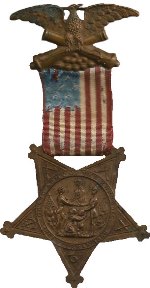
Finally, the Army instituted a new time limit. A nomination must occur within one year of the deed, beginning with the date the regulation was approved, June 26, 1897. A year later, the Army released further guidance about display of the medal if suspended around the recipient's neck. At this time, wearers typically wore the Medal of Honor pinned to their chest.
The nineteenth century closed with a number of conflicts, among them: Korean War of 1871, Spanish-American War and associated Philippine Insurrection, and Boxer Rebellion. For these and other conflicts of the period, the president awarded 274 Medals of Honor to Army and Navy personnel.
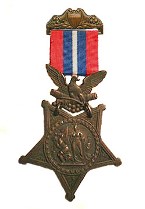
20th Century
During America's involvement in military conflicts persisted in the early years of the twentieth century, Congress continued to shape criteria for the Medal of Honor. In 1901, it appointed a panel to review nominations. The review board became permanent on April 19, 1902. In 1904, Congress passed a new design for the Army Medal of Honor, and patented the design to prohibit imitation.
The next change came from the Navy, in 1915, to make officers eligible for the medal. The following year, the Army and Navy authorized a special monthly pension for Medal of Honor recipients over age 65. Assessed quarterly, recipients were allotted $10 every month for life (equivalent to approximately $225 in 2014); and the pension has changed over the years to reflect the cost of living. In 2011, Medal of Honor recipients received $1,259 per month beyond their standard benefit.
The Board of Generals was commissioned in 1916 to review all existing recipients of the Medal of Honor. Recipients' citations were anonymous to the five retired generals appointed to the board. As a result of this evaluation, 911 names were struck from the honor roll, including all medals awarded to the 27th Maine; twenty-nine members of Lincoln's funeral guard; and six civilians who were ineligible as non-military personnel. The civilians included Indian scouts such as "Buffalo Bill" Cody and Dr. Mary Walker, the only female recipient. Eventually, the award was returned to Mary Walker (1977) and to the five civilian scouts (1989).
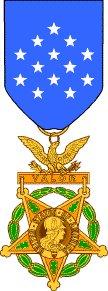
During World War I, the Medal of Honor was distinguished within the hierarchy of other military awards, referred to as the "Pyramid of Honor." In July 1918, the Medal of Honor became the pinnacle of military awards, topping the Distinguished Service Cross, Distinguished Service Medal, and Silver Star. Criteria for receiving the Army Medal of Honor were further refined. Recipients were required to be an "officer or enlisted man of the Army, participating in action involving actual conflict with an enemy, distinguish himself conspicuously by gallantry and intrepidity at the risk of his life above and beyond the call of duty." Beginning in 1918, recommendations for award must be made within two years of the act of heroism, and the medal presented within three years of the act. Lastly, the Medal of Honor can only be awarded to an individual once.
Airmen, members of the Army Air Service, were awarded the Medal of Honor for the first time in World War I. The U.S. Air Force became its own military service in 1947 but continued to use the Army's medal design; nine years later it obtained its own Medal of Honor design.
World War II provided the context for many "firsts," included the first Hispanic-American Medal of Honor recipient. Private Joseph P. Martinez was awarded his medal for action on May 23, 1943. During the war, the only Japanese-American to receive the Medal of Honor was Private First Class Sadao S. Munemori on April 5, 1945. His posthumous medal is on display at the Smithsonian Institution's Museum of American History.
Other minority soldiers have been belatedly recognized for their contributions. President H. W. Bush corrected historic record by presenting the Medal of Honor to African-American World War I soldier Corporal Freddie Stowers in 1991. Six World War II African-American soldiers recipients were recognized in 1997 and twenty-two Asian-American World War II veterans were so honored in 2000. After a full review by the U.S. Department of Defense, on March 18, 2014, President Barack Obama awarded twenty-four Medals of Honor. Recipients were primarily African-American, Hispanic and Jewish veterans of World War II, the Korean and Vietnam Wars.
The recognition of valor occurred as part of the last change to Medal of Honor criteria, on July 25, 1963. The medal is now awarded only for action against an enemy of the United States; while engaged in military operations involving conflict with opposing foreign force; or while with friendly forces in an armed conflict against an opposing armed force, when the United States is not belligerent party. Awards for non-combat ceased at this time.
In all, more than 3,400 Army, Navy, Marine, Air Force, and Coast Guard personnel have received the Medal of Honor for action during twenty separate periods of U.S. conflict. A total of 193 medals have recognized non-combat bravery through 1963, when this category was eliminated. Nineteen men received the Medal of Honor twice. Nine Medals of Honor were awarded to recognize the unknown U.S. soldiers buried in Arlington National Cemetery, as well as the World War I foreign unknowns buried overseas in Romania, Italy, the United Kingdom, France, and Belgium.











